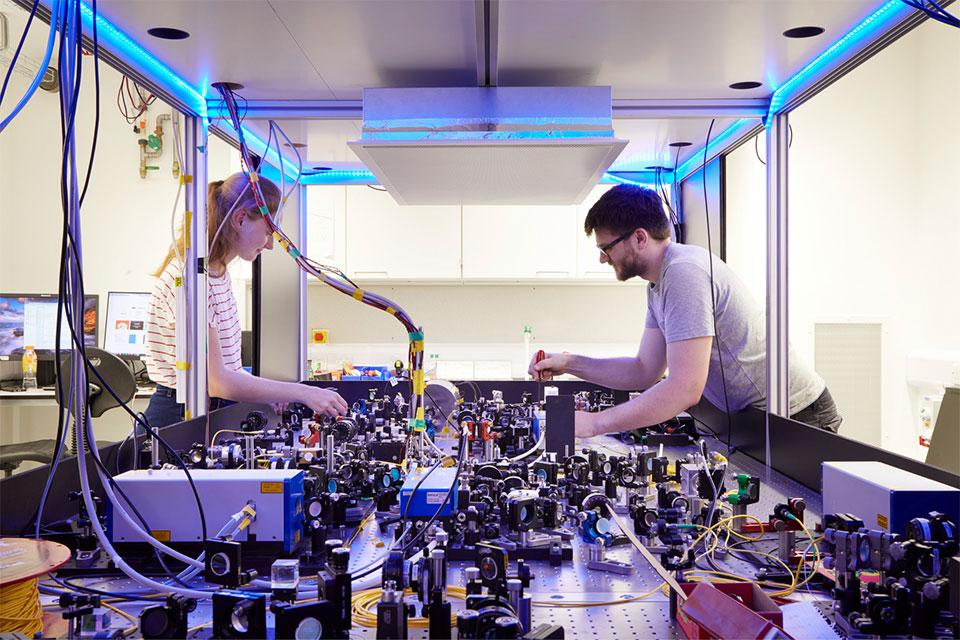Beecroft Building
David Nadlinger
Abstract
Trapped atomic ions and single photons are both widely studied as carriers of quantum information; their complementary strengths can be put to good use in quantum networks of ion trap nodes connected by optical fibre links. Such networks have a wide gamut of potential applications, whether on the local scale for modular quantum information processing, or for sensing and communication across a global “quantum internet”. In this talk, I will discuss an elementary two-node ion trap network across which we can generate remote entanglement with state-of-the-art performance [1], and present two recent experiments. In the first, we implement device-independent quantum key distribution, a protocol where the security of the generated encryption key is certified with minimal assumptions through a Bell test [2]. In the second, we demonstrate a technique for the comparison of two remote atomic clocks, where entanglement allows us to surpass the standard quantum limit on precision [3].
[1] Stephenson, Nadlinger et al. (2020), Phys. Rev. Lett. 124, 110501 (https://link.aps.org/doi/10.1103/PhysRevLett.124.110501)
[2] Nadlinger et al. (2021), arXiv:2109.14600 (https://arxiv.org/abs/2109.14600)
[3] Nichol, Srinivas et al. (2021), arXiv:2111.10336 (https://arxiv.org/abs/2111.10336)

